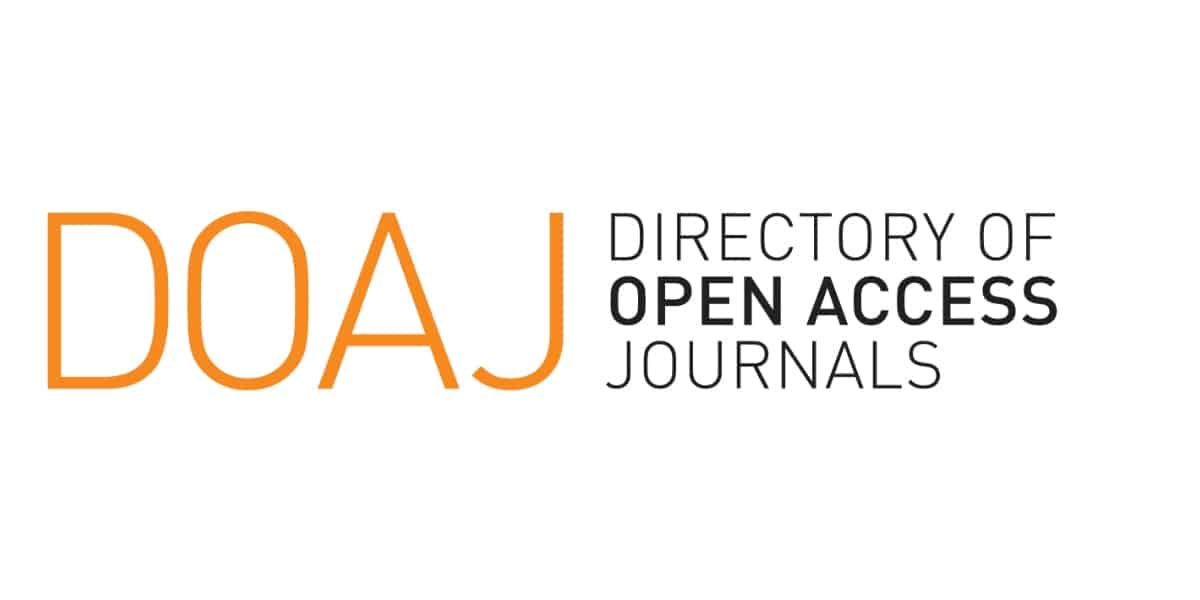Adaptasi Pertanian dalam Menghadapi Perubahan Iklim: Peluang Dan Tantangan
Keywords:
pertanian, perubahan iklim, dampak ekonomi, strategi adaptasi, ketahanan panganAbstract
Climate change is reported to have huge potential impacts on global agriculture, which vary by geographical region, crop or livestock type, and by the nature of the climatic changes. This paper reviews the relevant literature to determine how the economic impacts of climate change on the agricultural sector are compounded and specified at the regional level. The results show that rising temperatures generally reduce crop yields, and that the negative effects can sometimes be offset by increased precipitation. The winners and losers of climate change will vary geographically, but net yield losses are more likely in warmer semi-arid regions. This review also covers some of the methods used to assess the economic impacts of climate change on agriculture, such as experimental and cross-sectional studies and the Ricardian approach - each with its strengths and limitations. It also discusses the need for mitigation and adaptation strategies in the face of the challenges posed by climate change and highlights the need for context-specific approaches. The review concludes with a call for further research into rainfall patterns, the duration of natural disasters and the specific impacts of climate change on crop yields and nutrition.
References
[1] P. Singh, A. Raj, and B. Yadav, “Impacts of Agriculture-Based Contaminants on Groundwater Quality BT - Sustainability of Water Resources: Impacts and Management,” B. Yadav, M. P. Mohanty, A. Pandey, V. P. Singh, and R. D. Singh, Eds. Cham: Springer International Publishing, 2022, pp. 249–261.
[2] H. A. Prajapati and K. Yadav, “Impact of Climate Change on Global Agriculture : Challenges and Adaptation,” vol. 14, no. 4, pp. 372–379, 2024, doi: 10.9734/IJECC/2024/v14i44123.
[3] A. Robinson, J. Lehmann, D. Barriopedro, S. Rahmstorf, and D. Coumou, “Increasing heat and rainfall extremes now far outside the historical climate,” npj Clim. Atmos. Sci., vol. 4, no. 1, p. 45, 2021, doi: 10.1038/s41612-021-00202-w.
[4] S. Bolan et al., “Impacts of climate change on the fate of contaminants through extreme weather events,” Sci. Total Environ., vol. 909, p. 168388, 2024, doi: https://doi.org/10.1016/j.scitotenv.2023.168388.
[5] M. M. Rojas-Downing, A. P. Nejadhashemi, T. Harrigan, and S. A. Woznicki, “Climate change and livestock: Impacts, adaptation, and mitigation,” Clim. Risk Manag., vol. 16, pp. 145–163, 2017, doi: https://doi.org/10.1016/j.crm.2017.02.001.
[6] C. M. Godde, D. Mason-D’Croz, D. E. Mayberry, P. K. Thornton, and M. Herrero, “Impacts of climate change on the livestock food supply chain; a review of the evidence,” Glob. Food Sec., vol. 28, p. 100488, 2021, doi: https://doi.org/10.1016/j.gfs.2020.100488.
[7] T. Hu et al., “Climate change impacts on crop yields: A review of empirical findings, statistical crop models, and machine learning methods,” Environ. Model. Softw., vol. 179, p. 106119, 2024, doi: https://doi.org/10.1016/j.envsoft.2024.106119.
[8] T. Tanir, E. Yildirim, C. M. Ferreira, and I. Demir, “Social vulnerability and climate risk assessment for agricultural communities in the United States,” Sci. Total Environ., vol. 908, p. 168346, 2024, doi: https://doi.org/10.1016/j.scitotenv.2023.168346.
[9] IPCC, “Climate change: a threat to human wellbeing and health of the planet. Taking action now can secure our future,” https://www.ipcc.ch/2022/02/28/pr-wgii-ar6/, 2022. .
[10] Y. Benitez-Alfonso et al., “Enhancing climate change resilience in agricultural crops,” Curr. Biol., vol. 33, no. 23, pp. R1246–R1261, 2023, doi: https://doi.org/10.1016/j.cub.2023.10.028.
[11] Y. Masutomi, K. Takahashi, H. Harasawa, and Y. Matsuoka, “Impact assessment of climate change on rice production in Asia in comprehensive consideration of process/parameter uncertainty in general circulation models,” Agric. Ecosyst. Environ., vol. 131, no. 3, pp. 281–291, 2009, doi: https://doi.org/10.1016/j.agee.2009.02.004.
[12] T. T. Deressa and R. M. Hassan, “Economic Impact of Climate Change on Crop Production in Ethiopia: Evidence from Cross-section Measures,” J. Afr. Econ., vol. 18, no. 4, pp. 529–554, Aug. 2009, doi: 10.1093/jae/ejp002.
[13] G. A. Gbetibouo and R. M. Hassan, “Measuring the economic impact of climate change on major South African field crops: a Ricardian approach,” Glob. Planet. Change, vol. 47, no. 2, pp. 143–152, 2005, doi: https://doi.org/10.1016/j.gloplacha.2004.10.009.
[14] C. Wasko, R. Nathan, L. Stein, and D. O’Shea, “Evidence of shorter more extreme rainfalls and increased flood variability under climate change,” J. Hydrol., vol. 603, p. 126994, 2021, doi: https://doi.org/10.1016/j.jhydrol.2021.126994.
[15] J. Wang, R. O. Mendelsohn, A. Dinar, J. Huang, S. Rozelle, and L. Zhang, “Can China Continue Feeding Itself? The Impact of Climate Change on Agriculture,” World Bank Policy Res. Work. Pap. Ser., 2008, [Online]. Available: https://api.semanticscholar.org/CorpusID:55140714.
[16] T. Parthasarathi, S. Firdous, E. M. David, K. Lesharadevi, and M. Djanaguiraman, “Effects of High Temperature on Crops,” in Advances in Plant Defense Mechanisms, J. N. Kimatu, Ed. Rijeka: IntechOpen, 2022.
[17] R. Akhtar, “Climate Change and Geoecology of South and Southeast Asia: An Introduction.,” Climate Change and Human Health Scenario in South and Southeast Asia. pp. 1–10, 2016, doi: 10.1007/978-3-319-23684-1_1.
[18] Y. Nasr Ahmed, H. Delin, C. Belford, V. Shaker, and N. A. M. Abdelrahaman, “An estimate of the potential economic impacts of climate change on Egypt’s agriculture: a multi-market model approach,” Clim. Dev., vol. 13, no. 3, pp. 228–241, Mar. 2021, doi: 10.1080/17565529.2020.1754156.
[19] R. Mano and C. Nhemachena, “Assessment of the Economic Impacts of Climate Change on Agriculture in Zimbabwe A Ricardian Approach,” 2007.
[20] J. Kabubo-Mariara and F. K. Karanja, “The economic impact of climate change on Kenyan crop agriculture: A Ricardian approach,” Glob. Planet. Change, vol. 57, no. 3, pp. 319–330, 2007, doi: https://doi.org/10.1016/j.gloplacha.2007.01.002.
[21] T. O. Ojo and L. J. S. Baiyegunhi, “Impact of climate change adaptation strategies on rice productivity in South-west, Nigeria: An endogeneity corrected stochastic frontier model,” Sci. Total Environ., vol. 745, p. 141151, 2020, doi: https://doi.org/10.1016/j.scitotenv.2020.141151.
[22] G. S. Malhi, M. Kaur, and P. Kaushik, “Impact of Climate Change on Agriculture and Its Mitigation Strategies: A Review,” Sustainability, vol. 13, no. 3. 2021, doi: 10.3390/su13031318.
[23] S. N. Seo, B. A. McCarl, and R. Mendelsohn, “From beef cattle to sheep under global warming? An analysis of adaptation by livestock species choice in South America,” Ecol. Econ., vol. 69, no. 12, pp. 2486–2494, 2010, doi: https://doi.org/10.1016/j.ecolecon.2010.07.025.
[24] T. S. Senda, G. A. Kiker, P. Masikati, A. Chirima, and J. van Niekerk, “Modeling Climate Change Impacts on Rangeland Productivity and Livestock Population Dynamics in Nkayi District, Zimbabwe,” Applied Sciences, vol. 10, no. 7. 2020, doi: 10.3390/app10072330.
[25] S. N. Seo and R. Mendelsohn, “A RICARDIAN ANALYSIS OF THE IMPACT OF CLIMATE CHANGE ON SOUTH AMERICAN FARMS,” Chil. J. Agric. Res., vol. 68, no. August 2007, pp. 69–79, 2008.
[26] B. Tibesigwa, M. Visser, and J. Turpie, “Climate change and South Africa’s commercial farms: an assessment of impacts on specialised horticulture, crop, livestock and mixed farming systems,” Environ. Dev. Sustain., vol. 19, no. 2, pp. 607–636, 2017, doi: 10.1007/s10668-015-9755-6.
[27] G. Zhengfei, A. Oude Lansink, M. van Ittersum, and A. Wossink, “Integrating Agronomic Principles into Production Function Specification: A Dichotomy of Growth Inputs and Facilitating Inputs,” Am. J. Agric. Econ., vol. 88, no. 1, pp. 203–214, 2006, doi: https://doi.org/10.1111/j.1467-8276.2006.00848.x.
[28] M. D. Young, G. H. Ros, and W. de Vries, “Impacts of agronomic measures on crop, soil, and environmental indicators: A review and synthesis of meta-analysis,” Agric. Ecosyst. Environ., vol. 319, p. 107551, 2021, doi: https://doi.org/10.1016/j.agee.2021.107551.
[29] V. Radchuk et al., “Adaptive responses of animals to climate change are most likely insufficient,” Nat. Commun., vol. 10, no. 1, p. 3109, 2019, doi: 10.1038/s41467-019-10924-4.
[30] N. T. L. Huong, Y. S. Bo, and S. Fahad, “Economic impact of climate change on agriculture using Ricardian approach: A case of northwest Vietnam,” J. Saudi Soc. Agric. Sci., vol. 18, no. 4, pp. 449–457, 2019, doi: https://doi.org/10.1016/j.jssas.2018.02.006.
[31] F. Bareille and R. Chakir, “The impact of climate change on agriculture: A repeat-Ricardian analysis,” J. Environ. Econ. Manage., vol. 119, p. 102822, 2023, doi: https://doi.org/10.1016/j.jeem.2023.102822.
[32] A. Mulagha-Maganga, L. S. Chiwaula, P. Kambewa, and M. E. Ngaiwi, “A Ricardian analysis of the economic impacts of climate change on agricultural production in the low-income agrarian economy: Estimates from Malawi’s 2010–2019 LSMS longitudinal data,” J. Agric. Food Res., vol. 15, p. 100995, 2024, doi: https://doi.org/10.1016/j.jafr.2024.100995.
[33] B. Mantlana and A. O. Jegede, “Understanding the multilateral negotiations on climate change ahead of COP27: Priorities for the African region,” South African J. Int. Aff., vol. 29, no. 3, pp. 255–270, Jul. 2022, doi: 10.1080/10220461.2022.2134201.
[34] J. J. Lawler et al., “Mitigation and Adaptation Strategies to Reduce Climate Vulnerabilities and Maintain Ecosystem Services.,” Climate Vulnerability. pp. 315–335, 2013, doi: 10.1016/B978-0-12-384703-4.00436-6.
[35] S. Dessai and M. Hulme, “Climatic Implications of Revised IPCC Emissions Scenarios, the Kyoto Protocol and Quantification of Uncertainties,” Integr. Assess., vol. 2, no. 3, pp. 159–170, 2001, doi: 10.1023/A:1013300520580.
[36] R. S. J. Tol, “Adaptation and mitigation: trade-offs in substance and methods,” Environ. Sci. Policy, vol. 8, no. 6, pp. 572–578, 2005, doi: https://doi.org/10.1016/j.envsci.2005.06.011.
[37] S. Brown et al., “Global costs of protecting against sea-level rise at 1.5 to 4.0 °C,” Clim. Change, vol. 167, no. 1, p. 4, 2021, doi: 10.1007/s10584-021-03130-z.
[38] S. Chen and B. Gong, “Response and adaptation of agriculture to climate change: Evidence from China,” J. Dev. Econ., vol. 148, p. 102557, 2021, doi: https://doi.org/10.1016/j.jdeveco.2020.102557.
[39] E. Grigorieva, A. Livenets, and E. Stelmakh, “Adaptation of Agriculture to Climate Change: A Scoping Review,” Climate, vol. 11, no. 10. 2023, doi: 10.3390/cli11100202.
[40] C. Howarth and E. J. Z. Robinson, “Effective climate action must integrate climate adaptation and mitigation,” Nat. Clim. Chang., vol. 14, no. 4, pp. 300–301, 2024, doi: 10.1038/s41558-024-01963-x.
[41] D. P. van Vuuren et al., “The use of scenarios as the basis for combined assessment of climate change mitigation and adaptation,” Glob. Environ. Chang., vol. 21, no. 2, pp. 575–591, 2011, doi: https://doi.org/10.1016/j.gloenvcha.2010.11.003.
[42] S. Villamayor-Tomas et al., “Developing countries can adapt to climate change effectively using nature-based solutions,” Commun. Earth Environ., vol. 5, no. 1, p. 214, 2024, doi: 10.1038/s43247-024-01356-0.
[43] L. Rachmawati, A. D. Ekaputri, L. K. Katherina, and H. Santoso, “Climate Change Adaptation in Indonesia BT - Climate Change Adaptation in Southeast Asia,” J. J. Pereira, M. K. Zain, and R. Shaw, Eds. Singapore: Springer Singapore, 2022, pp. 57–75.
[44] T. Ihsan and V. Derosya, “Tinjauan Strategi Pengemasan Buah dan Sayur dalam Memerangi Food Loss dalam Rantai Pasokan Pascapanen di Indonesia,” J. Ilmu Lingkung., vol. 22, no. 4, pp. 1078–1087, Jun. 2024, [Online]. Available: https://ejournal.undip.ac.id/index.php/ilmulingkungan/article/view/58507.
[45] W. Neil Adger, N. W. Arnell, and E. L. Tompkins, “Successful adaptation to climate change across scales,” Glob. Environ. Chang., vol. 15, no. 2, pp. 77–86, 2005, doi: https://doi.org/10.1016/j.gloenvcha.2004.12.005.
Downloads
Published
Issue
Section
License
Copyright (c) 2024 Taufiq Ihsan, Vioni Derosya (Author)

This work is licensed under a Creative Commons Attribution 4.0 International License.
















